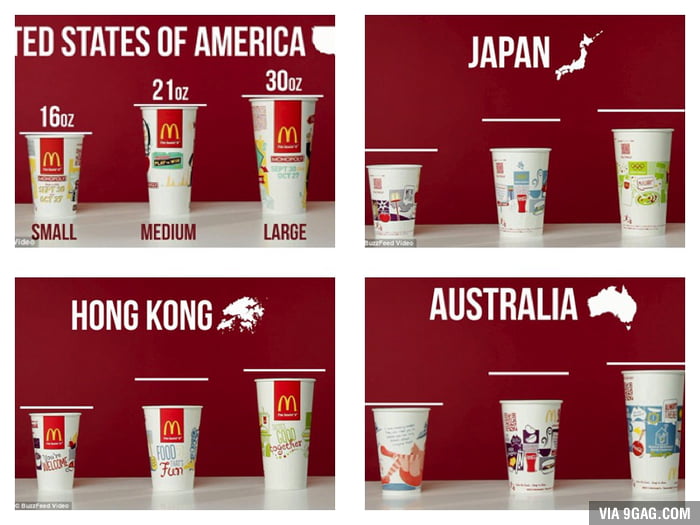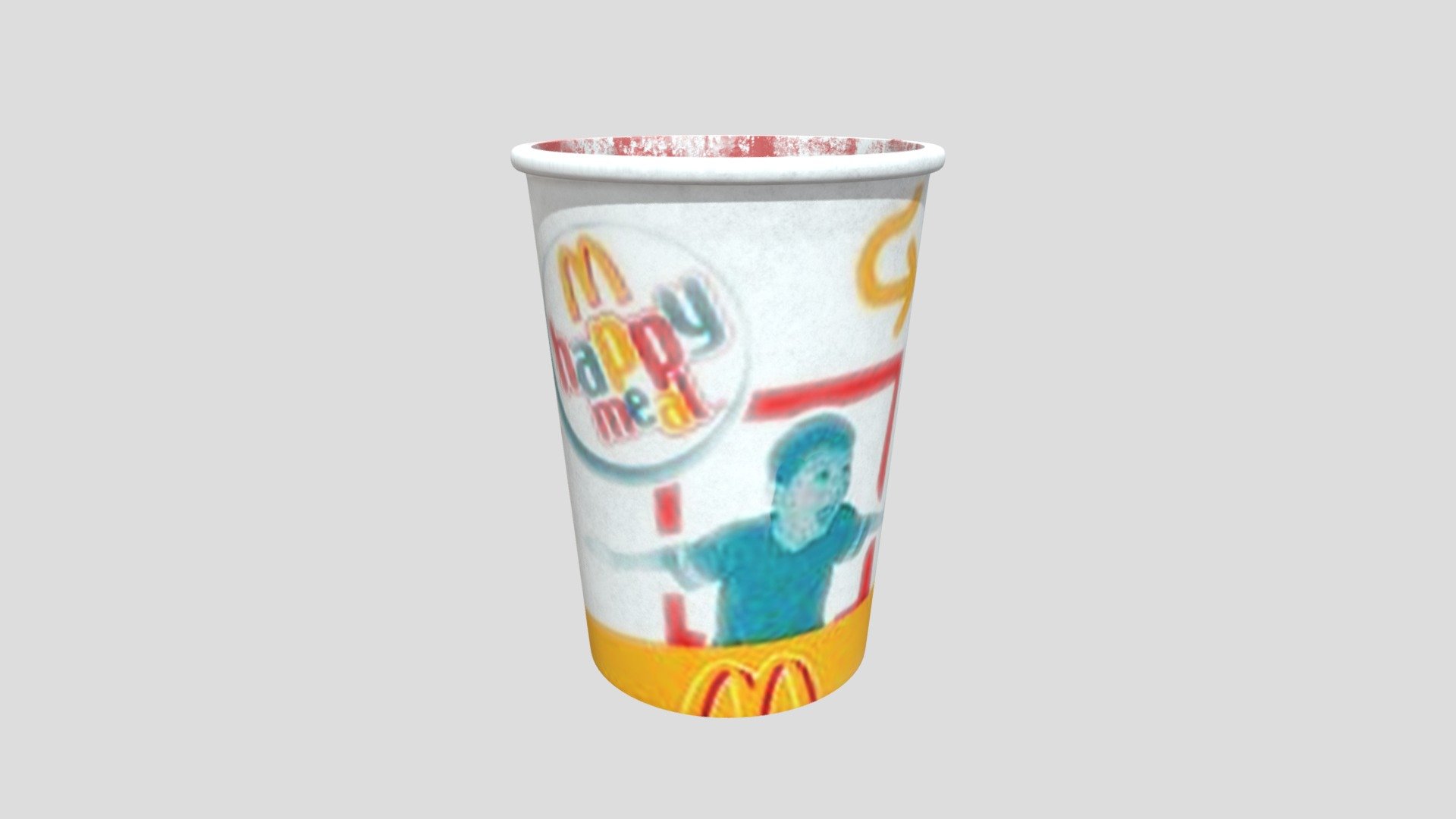McDonald’s Cups

McDonald’s cups, those ubiquitous vessels holding everything from coffee to milkshakes, have become an iconic part of the fast-food giant’s brand identity. Their design has evolved over the years, reflecting changing trends and consumer preferences while remaining instantly recognizable.
Design Evolution and Iconic Cups
McDonald’s cup designs have undergone a significant transformation since the company’s inception. Early cups were often simple and functional, featuring the iconic golden arches logo. As the brand grew, so did its cup designs, incorporating bolder colors, playful graphics, and memorable characters.
- The Classic Red Cup: This iconic design, introduced in the 1960s, became synonymous with McDonald’s. The vibrant red color, coupled with the golden arches logo, created a visually striking and memorable brand symbol. The red cup served as a canvas for various promotions and campaigns, further solidifying its place in pop culture.
- The Happy Meal Cups: In the 1970s, McDonald’s introduced the Happy Meal, a children’s meal that included a toy. The Happy Meal cups, often featuring cartoon characters like Ronald McDonald and Grimace, became a beloved part of the experience. These colorful and whimsical designs catered to the target audience, creating a sense of fun and excitement.
- The McCafe Cups: With the launch of its McCafe line in the 2000s, McDonald’s introduced a more sophisticated cup design. These cups, often featuring a minimalist aesthetic and earthy tones, reflected the growing popularity of specialty coffee. They aimed to appeal to a more discerning adult audience, showcasing the company’s commitment to quality and taste.
Materials and Environmental Impact
McDonald’s cups have primarily been made from polystyrene, a lightweight and durable material. However, the environmental impact of polystyrene has been a growing concern. Polystyrene is not biodegradable, and its disposal can contribute to landfill waste and pollution.
- Shifting to Sustainable Materials: Recognizing the environmental challenges, McDonald’s has been exploring alternative materials for its cups. In some markets, the company has introduced cups made from paper or recycled plastic. These initiatives aim to reduce the environmental footprint of its packaging and promote sustainability.
- Recycling Programs: McDonald’s has also implemented recycling programs in many locations. Customers are encouraged to dispose of their cups properly, allowing for their recycling and reducing the amount of waste going to landfills.
Cultural Reflections
McDonald’s cup designs have often reflected changing cultural trends and societal values. The use of bold colors and playful graphics in the early years reflected a period of optimism and consumerism. Later designs, incorporating themes of sustainability and social responsibility, reflect the growing awareness of environmental issues and the desire for ethical consumption.
- Limited Edition Cups: McDonald’s has also released limited edition cups for special occasions and events. These designs often feature collaborations with popular artists, musicians, or brands, allowing the company to connect with specific cultural audiences and tap into current trends.
- Social Media Campaigns: In recent years, McDonald’s has leveraged social media to promote its cup designs and engage with customers. These campaigns often involve contests, giveaways, and user-generated content, allowing the company to tap into the collective creativity and enthusiasm of its customer base.
McDonald’s Meal Packaging

McDonald’s meal packaging is an integral part of the fast-food experience, designed to ensure food safety, hygiene, and convenience while minimizing environmental impact.
The packaging components are designed to work together to protect the food, maintain its temperature, and make it easy for customers to enjoy their meals.
Components of McDonald’s Meal Packaging
McDonald’s meal packaging comprises several components, each serving a specific purpose.
- Cups: McDonald’s uses various types of cups for beverages, including hot drinks like coffee and tea, as well as cold drinks like soda and iced tea. These cups are typically made from paper or plastic and feature a lid to prevent spills. They are designed to be leak-proof and insulated to maintain the temperature of the beverage.
- Trays: Trays are the primary containers for holding the main components of a meal, such as burgers, fries, and nuggets. They are typically made from paperboard or polystyrene and are designed to be sturdy and stackable. They are also coated with a moisture-resistant layer to prevent food from leaking and making the tray soggy.
- Wrappers: Wrappers are used to individually package items like burgers, sandwiches, and chicken nuggets. They are typically made from paper or plastic and are designed to be grease-proof and moisture-resistant. They also help to keep the food warm and prevent it from getting cold.
- Bags: Bags are used to carry the entire meal and are typically made from paper or plastic. They are designed to be strong and durable, capable of holding multiple items without tearing.
Food Safety and Hygiene
The design of McDonald’s meal packaging plays a crucial role in ensuring food safety and hygiene.
- Barrier Protection: The materials used in the packaging, such as paperboard and plastic, create a barrier between the food and the environment, preventing contamination from dust, dirt, and other external factors.
- Moisture Resistance: The packaging is designed to be moisture-resistant, preventing the food from becoming soggy and creating a breeding ground for bacteria.
- Grease-Proof: The wrappers used for burgers and sandwiches are grease-proof, preventing the food from becoming greasy and making the packaging difficult to handle.
Environmental Impact and Sustainability Initiatives
McDonald’s is aware of the environmental impact of its packaging and has implemented various sustainability initiatives to reduce its footprint.
- Material Sourcing: McDonald’s sources its packaging materials from sustainable sources, including recycled paper and plant-based plastics.
- Packaging Reduction: The company has implemented initiatives to reduce the amount of packaging used, such as using smaller trays and eliminating unnecessary components.
- Recycling and Compostability: McDonald’s encourages customers to recycle and compost their packaging where possible. They also work with suppliers to develop packaging that is more easily recyclable or compostable.
Material and Environmental Impact
| Material | Environmental Impact |
|---|---|
| Paperboard | Renewable resource, but production requires energy and water. Can be recycled. |
| Polystyrene | Non-renewable resource, difficult to recycle, and can persist in the environment for centuries. |
| Plastic | Derived from fossil fuels, can be recycled, but often ends up in landfills or the ocean. |
| Paper | Renewable resource, but production requires energy and water. Can be recycled. |
The McDonald’s Cup as a Cultural Icon: Mcdonalds Cups Meal

The humble McDonald’s cup, a seemingly ordinary vessel for beverages, has transcended its utilitarian purpose to become a recognizable symbol of the fast-food industry and a cultural icon in its own right. Its ubiquity, enduring design, and presence in popular culture have cemented its place in the collective consciousness.
The McDonald’s Cup in Popular Culture
The McDonald’s cup has become a recurring motif in popular culture, appearing in movies, television shows, and music videos. Its presence often signifies a sense of Americana, youthfulness, and casual dining.
- In the 2004 film “Napoleon Dynamite,” the titular character is often seen holding a McDonald’s cup, reflecting his quirky and relatable persona.
- The iconic “Friends” sitcom featured the characters frequenting a fictionalized version of a McDonald’s, with the cups appearing in several scenes, highlighting the casual and relatable setting of the show.
- The music video for “Can’t Hold Us” by Macklemore and Ryan Lewis features a prominent shot of a McDonald’s cup, contributing to the song’s theme of celebrating everyday moments and defying expectations.
The McDonald’s Cup in Art and Design, Mcdonalds cups meal
The McDonald’s cup has also found its way into the world of art and design, inspiring creative interpretations and reinterpretations.
- The “McDonald’s Cups” project by artist David Shrigley involved transforming discarded McDonald’s cups into sculptures, showcasing the inherent artistic potential of everyday objects.
- Graphic designer Michael Bierut created a series of posters featuring stylized versions of the McDonald’s cup, exploring the power of simple design and brand recognition.
- The “McDonald’s Cup” installation by artist Tom Sachs incorporated hundreds of discarded cups into a large-scale sculpture, commenting on consumerism and the impact of fast food on society.
Factors Contributing to the Enduring Popularity of McDonald’s Cups
Several factors contribute to the enduring popularity of McDonald’s cups:
- Ubiquity: The cups are ubiquitous, readily available in countless locations worldwide, reinforcing their association with the brand and its global reach.
- Simple Design: The cups’ simple, instantly recognizable design, featuring the iconic golden arches and red color scheme, has remained largely unchanged over the years, creating a consistent visual identity.
- Nostalgia: For many, the McDonald’s cup evokes a sense of nostalgia, recalling childhood memories, family outings, and shared experiences.
- Pop Culture Influence: The cups’ presence in popular culture has further solidified their status as a cultural icon, making them synonymous with a specific era, lifestyle, and set of values.
The iconic red and yellow arches of McDonald’s are instantly recognizable, but have you ever considered the humble paper cup that holds your meal? These seemingly simple containers have a rich history, evolving alongside the fast-food giant itself. For a fascinating glimpse into the design and impact of these cups, explore mcdonalds cups meal.
From their early beginnings to their current status as a symbol of American culture, McDonald’s cups have played a significant role in shaping our relationship with food and consumption.
The iconic red cups of McDonald’s meals have become a symbol of fast food indulgence, but even familiar comforts can sometimes hold hidden concerns. Just as we enjoy the convenience of a quick meal, we must also be aware of potential issues, like the recent walmart recalls candy that highlight the importance of food safety.
Ultimately, enjoying a McDonald’s meal should be a pleasurable experience, free from any anxieties about potential risks.
